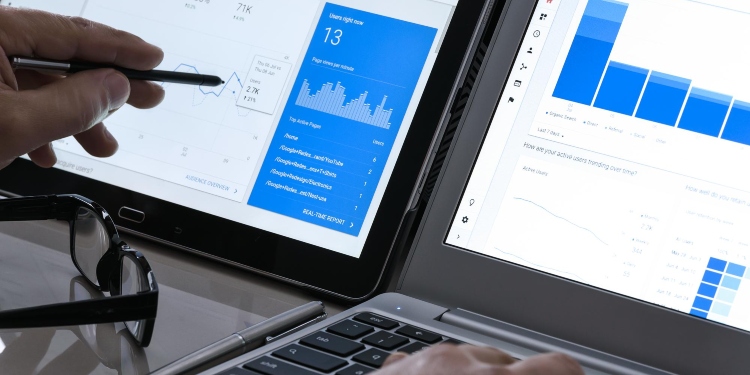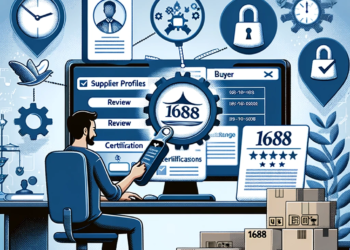E-commerce and PPC advertising have always been natural partners. The immediacy of paid search, the precision of audience targeting, and the ability to track every click through to purchase make PPC one of the most powerful tools in an online retailer’s arsenal.
But here’s what’s changed: the landscape has become exponentially more sophisticated. What worked two years ago might be burning a budget today. The e-commerce brands winning with PPC in 2025 aren’t just running ads – they’re orchestrating complex, data-driven strategies across multiple platforms that adapt in real-time to customer behaviour.
The Foundation: Getting Your Shopping Feed Right
Google Shopping ads account for the majority of e-commerce PPC spend, and they all start with your product feed. This isn’t glamorous work, but it’s where most campaigns succeed or fail before a single ad runs.
The brands seeing the best returns obsess over feed quality. They’re not just uploading product titles from their website – they’re optimising every field for how people actually search. Product titles include brand names, key features, colours, and specific attributes that match search intent. Descriptions are detailed but scannable. Categories are precise.
Image quality matters more than most retailers realise. Shopping ads are visual-first, and a professional product photo against a clean background will consistently outperform creative lifestyle shots when it comes to click-through rates. Save the lifestyle imagery for social campaigns – in Shopping ads, clarity wins.
Custom labels are where sophisticated advertisers gain an edge. By tagging products with margin levels, seasonal relevance, or bestseller status, you can bid more aggressively on high-value items whilst keeping overall ROAS targets healthy. A product with 60% margins can justify a higher cost-per-acquisition than one with 20% margins, but only if you’re segmenting your feed properly.
Smart Bidding: Trusting the Machine (With Guardrails)
Google’s Smart Bidding has matured significantly. Target ROAS and Maximise Conversion Value strategies can now outperform manual bidding in most e-commerce scenarios, but only if you set them up properly.
The key is giving the algorithm enough data. Smart Bidding needs at least 30 conversions in the past 30 days to perform effectively. For new campaigns or low-volume products, start with manual CPC or Enhanced CPC until you hit that threshold.
Conversion tracking needs to be flawless. If your tracking is dropping 10% of purchases, the algorithm is optimising towards incomplete data, and your results will suffer. Use Google Tag Manager, implement server-side tracking where possible, and regularly audit your conversion data against your actual sales figures.
One tactic that separates sophisticated advertisers from the rest: assigning different conversion values based on customer type. A new customer might be worth more to your business than a repeat customer (or vice versa), and feeding that nuance into your bidding strategy can dramatically improve long-term profitability.
The Audience Layer
Product targeting is just the beginning. The e-commerce brands seeing exceptional results are layering audience data on top of their shopping and search campaigns.
Remarketing audiences remain powerful, but they need segmentation. Someone who viewed a product once shouldn’t see the same ads as someone who added to the basket but didn’t purchase. Create specific ad copy and offers for each stage of the funnel.
In-market audiences and custom intent audiences help you reach potential customers before they’ve visited your site. If you sell premium coffee machines, you can target people actively researching “best espresso makers” or visiting competitor websites, putting your products in front of them at the research stage rather than waiting for them to search for your brand.
Customer Match, where you upload customer email lists, opens powerful opportunities. You can create lookalike audiences to reach people similar to your best customers, or exclude existing customers from acquisition campaigns to reduce wasted spend.
Platform Diversification
Google Shopping dominates e-commerce PPC, but the brands with the healthiest channel mix are expanding strategically to other platforms.
Microsoft Advertising (formerly Bing Ads) typically delivers 10-15% of the volume of Google but at 20-30% lower CPCs. The audience skews slightly older and more affluent, which benefits certain product categories. Setting up Microsoft Shopping campaigns takes minimal effort if you’re already running Google Shopping – you can import campaigns directly.
Meta (Facebook and Instagram) Shopping ads work differently from search-based platforms. People aren’t actively looking for your products, so creative quality and audience targeting become critical. Dynamic product ads that automatically show people products they’ve viewed on your website deliver strong ROAS for most e-commerce brands.
Pinterest Shopping ads deserve consideration if you sell visually appealing products in categories like home décor, fashion, or food. Pinterest users are actively looking for inspiration and ideas, making them receptive to product discovery in a way that other platforms don’t match.
TikTok Shopping is emerging as a genuine performance channel for brands with the right creative approach. The platform requires authentic, native-feeling content rather than polished product shots, but early adopters are seeing impressive returns from younger demographics.
The Creative Advantage
Most e-commerce PPC advice focuses on targeting and bidding, but creative is often the biggest lever you can pull. A 1% improvement in click-through rate delivers the same impact as a 50% reduction in CPC.
For search ads, specific product callouts beat generic messaging every time. “Free delivery on orders over £50” tells people something useful. “Shop now for amazing deals” tells them nothing. Include specific benefits, unique selling points, and answer the question “why should I click your ad instead of the one below it?”
Promotion extensions, price extensions, and seller ratings all increase click-through rates when used properly. Test different combinations to find what resonates with your audience.
For Shopping campaigns, while you can’t control the ad creative directly, you can influence it through your product feed. Products with multiple images, detailed attributes, and competitive pricing get shown more often and attract more clicks.
Working with Specialists
Managing effective e-commerce PPC requires constant attention. Algorithm updates, seasonal trends, competitive changes, and platform feature releases mean that what worked last quarter needs reassessment this quarter.
Many successful e-commerce brands partner with a specialist PPC agency London to maintain their competitive edge. These agencies bring experience across hundreds of e-commerce accounts, spotting opportunities and avoiding pitfalls that would take years to learn independently.
The right agency relationship isn’t about outsourcing and forgetting – it’s about having experts who understand your business goals, can interpret the data meaningfully, and implement sophisticated strategies that might not be possible in-house. They’re seeing what’s working across your competitors and adjacent categories, bringing insights you wouldn’t have access to otherwise.
Seasonal Strategy
E-commerce is inherently seasonal. The brands that maximise PPC returns plan their calendar months in advance, building campaigns specifically for peak periods like Black Friday, Christmas, or category-specific seasons.
This means adjusting budgets in advance of demand spikes, creating seasonal ad copy and landing pages, and using historical data to forecast traffic and conversion patterns. Starting your Black Friday campaigns on Black Friday means you’ve already lost to competitors who began building momentum weeks earlier.
Equally important is having a strategy for off-peak periods. Reducing budgets during slower months makes sense, but completely pausing campaigns means losing momentum and historical data that your bidding algorithms rely on.
Measurement Beyond ROAS
Return on ad spend (ROAS) is the standard metric for e-commerce PPC, but optimising purely for ROAS can lead to short-term thinking that damages long-term growth.
Customer lifetime value matters. Acquiring a customer at a 2x ROAS might look mediocre on paper, but if that customer makes repeat purchases over the following year, the actual return is far higher. Track cohorts of customers acquired through PPC and measure their long-term value.
Brand awareness has value even when people don’t click. Someone who sees your Shopping ad but doesn’t click might still visit your website directly later. Attribution models capture some of this, but not all of it.
The Path Forward
E-commerce PPC success in 2025 requires balancing automation with strategic thinking. Let the algorithms handle bid management and audience targeting, but bring human insight to creative strategy, feed optimisation, and channel selection.
Test relentlessly. The difference between good and great PPC performance often comes down to systematic testing of ad copy, landing pages, audience segments, and bidding strategies. What works for competitors might not work for you, and what worked last quarter might not work next quarter.
Most importantly, remember that PPC isn’t isolated from the rest of your marketing. Your email strategy, organic social presence, and content marketing all influence how people respond to your paid ads. The most successful e-commerce brands build integrated strategies where PPC amplifies everything else they’re doing, rather than operating in a silo.
The opportunity in e-commerce PPC remains enormous. The brands winning are those who treat it as a sophisticated discipline requiring expertise, experimentation, and constant evolution rather than a set-and-forget advertising channel.
David Prior
David Prior is the editor of Today News, responsible for the overall editorial strategy. He is an NCTJ-qualified journalist with over 20 years’ experience, and is also editor of the award-winning hyperlocal news title Altrincham Today. His LinkedIn profile is here.











































































